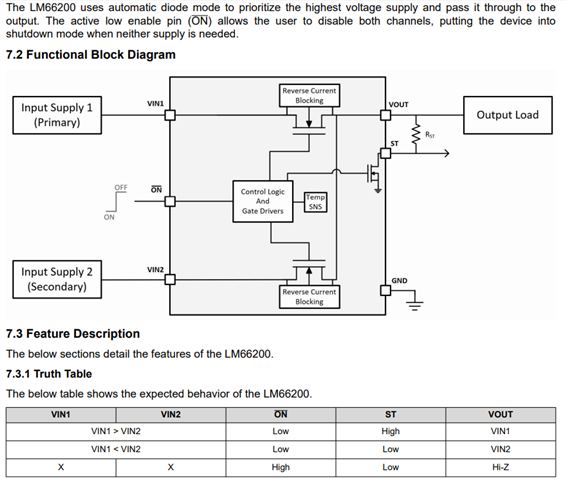Other Parts Discussed in Thread: TPS2117
We are designing a system using the LM66200 where a DC power supply is connected to VIN1 and a primary Lithium battery is connected to VIN2. When the DC supply is higher than the battery voltage it powers the system on VOUT otherwise the system is powered by the battery. The safety requirement is that any battery charge current (reverse current out of VIN2) must never exceed 25 mA.
Referring to the block diagram:

My question regards how the LM66200 functions.
Is it, as the datasheet suggests, based on ideal diode Or-ing whereby there may be reverse current up to IRCB, Reverse current blocking activation current = 1.4 A typ before VIN2 is deselected and VIN1 is selected (and which could theoretically continue above 25 mA for an extended time before the selection change)?
Or is the input selection based on voltage comparison between VIN1 and VIN2 and once one input is selected, the other input is blocked in both forward and reverse directions such as with controlled back-to-back FETs. (which is not reflected in the block diagram, and in which case what is the need for the reverse current blocking function).


